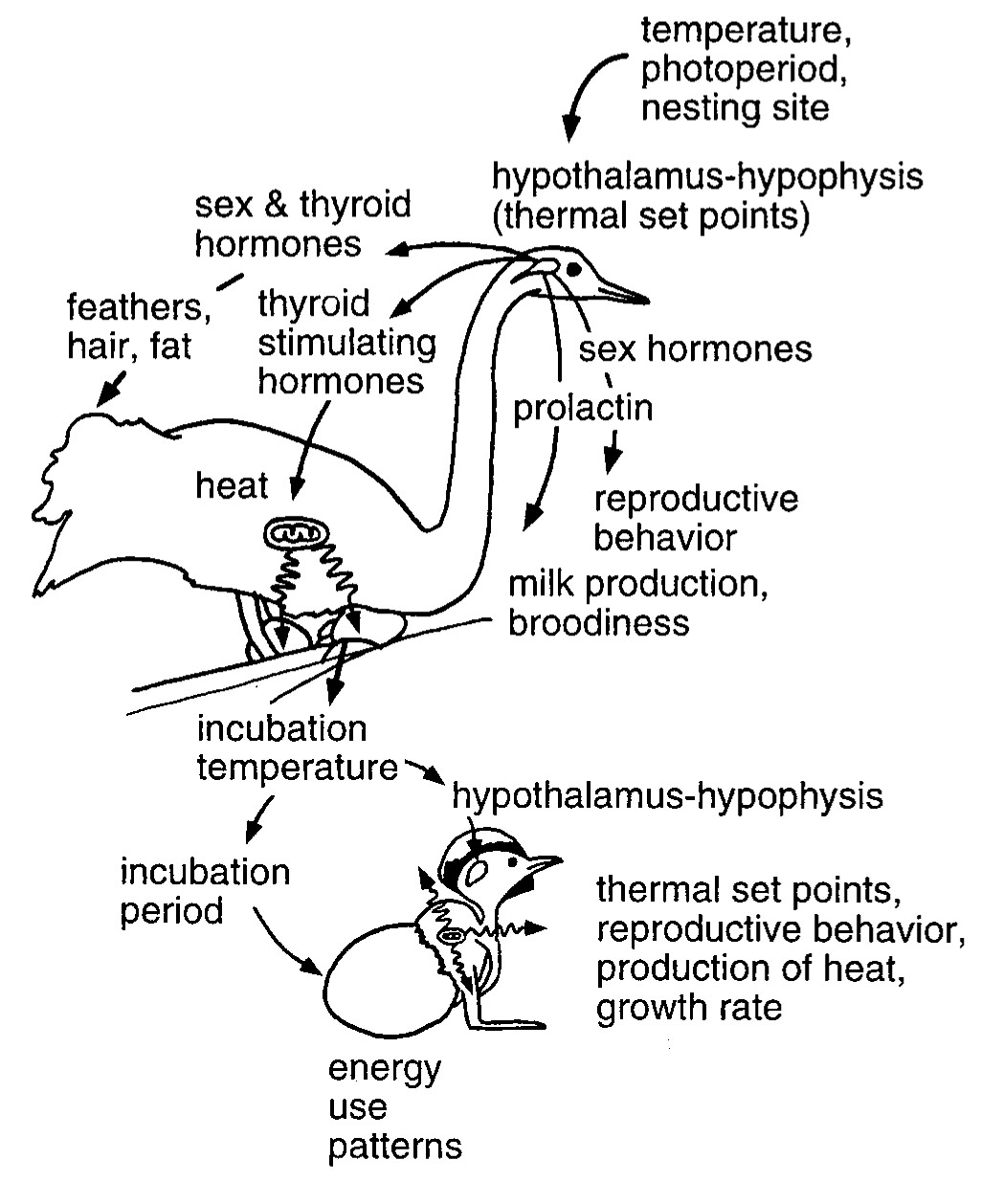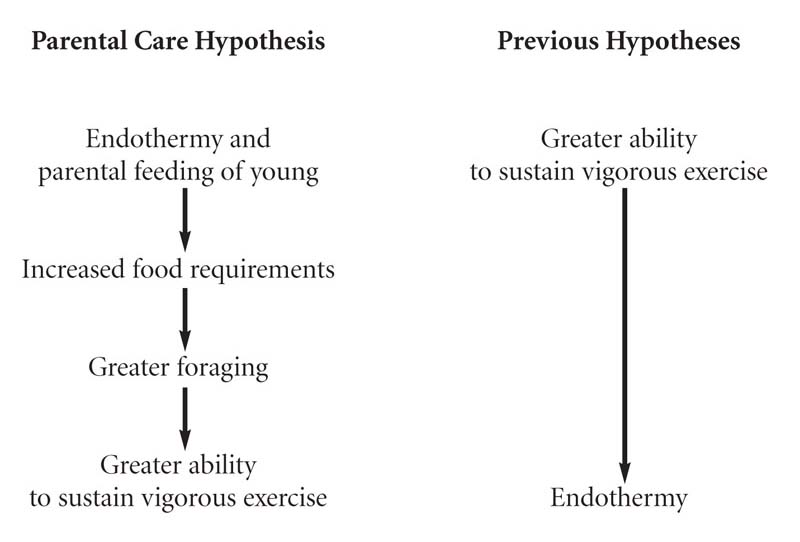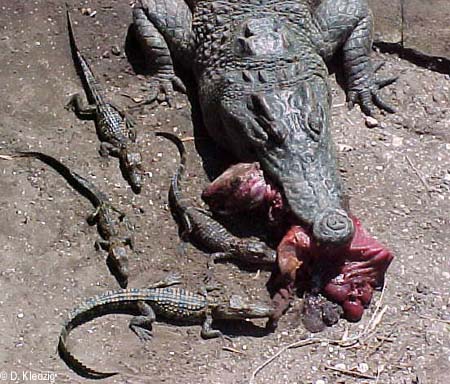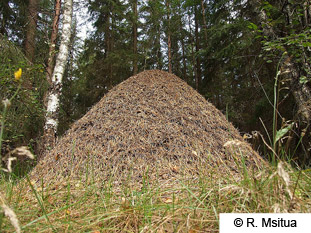Birds and mammals share a number of features that are remarkably similar but have evolved convergently. Although endothermy has been proposed to have been a cardinal character that led to much of this convergent evolution, selection for extensive parental care behaviors is a more compelling explaination. Because extensive parental care encompasses a wide range of behaviors, morphology, and physiology, it may be a key innovation that has influenced a suit of chararcters shared by these lineages: rapid rates of growth, expanded aerobic capacities, keen hearing and vocal communication. By providing embryos and young with warmth, parents can decrease the time required between conception and sexual maturity, reducing the time spent in the vulnerable juvenile years. This hypothesis for the evolution of endothermy provides a plausible mechanisms for the thermogenesis, thyroid and other hormones that play roles in reproduction could have taken on a thermogenic role. Lineages that were already providing parental care, such as nest guarding or regulation hydric conditions, could have had small increases in metabolism due the presence of these hormones, and provided heat to the eggs and hatchlings. If the nest was constructed in an insulated or shetlered environment, a small increase in metabolism could have affected development, especially of the hypothalamus-hypophysial axis, which controls standard and basal metabolic rates, thermal set points, growth rates, reproductive and parental care behaviors, as well as traits important for insulation (body fat levels, hair and feather growth). Because provisioning heat increases energy budgets, this form of parental care is expected to select expanded aerobic capacities. Farmer (2000), Farmer (2001), Farmer (2003).   |


